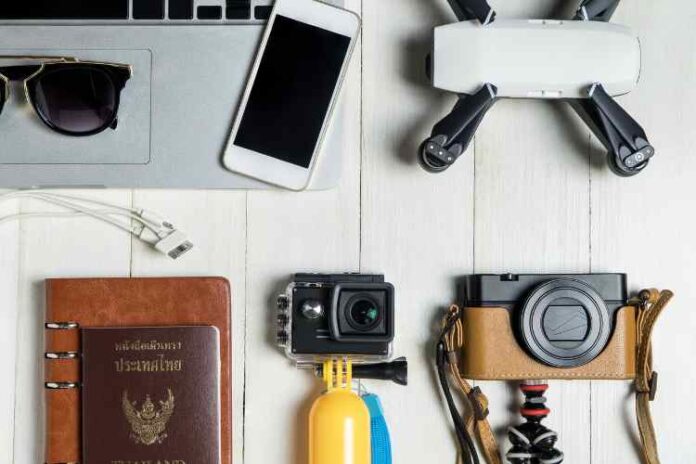When we want to travel these days, we can go to our home office, shut the interior doors, and just use our phone or computer. Everything can be taken care of. This was not the case 30 years ago.
How We Used to Travel
Traveling 30 years ago was a vastly different experience than it is today. In the early 1990s, technology was not as advanced as it is today, and there were many aspects of travel that were less convenient and less accessible. For example, nowadays we all are surrounded by technology driven stuffs whatever it is our interior french doors or our everyday appliances. Everything is now automated and so easy to manage. This is amazing, right? But here are some of the ways that traveling 30 years ago differed from traveling today:
Thirty years ago, travelers had limited options for booking travel. Most people relied on travel agents to book flights, hotels, and rental cars. This required in-person visits or phone calls to the travel agent’s office, which could be time-consuming and inconvenient.
Travel information was much more limited 30 years ago. Guidebooks and brochures were the primary sources of information about travel destinations, and travelers had to rely on printed maps and travel guides to navigate new places.
In the past, paper tickets were the norm for air travel. Travelers had to wait for their tickets to arrive in the mail or pick them up at the airport. Losing or forgetting tickets was a common problem, and replacing them could be a hassle.
Paying for travel was also more complicated 30 years ago. Credit cards were not as widely accepted, and travelers often had to carry cash or traveler’s checks. Paying for travel expenses required more planning and preparation.
In-flight entertainment was limited to a few movies or TV shows on small overhead screens. Portable electronics like laptops, tablets, and smartphones were not widely available, so travelers had to bring books or magazines to entertain themselves on long flights.
Communicating with friends and family while traveling was also more challenging 30 years ago. Calling home required using pay phones, which were often in poor condition or hard to find. Internet and email were not yet widespread, making it difficult to stay in touch with loved ones while on the road.
Navigating new destinations was more difficult 30 years ago. GPS technology was not yet available, and travelers had to rely on printed maps or ask locals for directions. Getting lost or taking wrong turns was common, and finding one’s way back could be challenging.
Using Travel Technology Today
Technology has significantly impacted the way we travel in recent years. It has made travel more accessible, efficient, and enjoyable. The travel industry has been transformed by new technology, from online booking platforms and mobile apps to social media and virtual reality. Here are some of the most notable ways technology has changed the way we travel:
1.Online Booking
One of the most significant ways technology has changed travel is through online booking. Travel websites such as Expedia, Travelocity, and Booking.com have made it easy for travelers to book flights, hotels, rental cars, and activities from the comfort of their own homes. This has made travel planning more accessible and convenient, allowing travelers to compare prices, read reviews, and make reservations with ease.
2.Mobile Apps
Mobile apps have also transformed the way we travel. Travel apps like Airbnb, Google Maps, and TripAdvisor have made it easier to find accommodation, navigate new destinations, and discover local activities. These apps provide real-time information, personalized recommendations, and user-generated reviews, allowing travelers to make informed decisions about their travel plans.
3.Social Media
Social media has also had a significant impact on travel. Platforms like Instagram, Facebook, and TikTok have inspired wanderlust and encouraged travelers to explore new destinations. Social media influencers and travel bloggers have become significant sources of travel inspiration and information, sharing their experiences and recommendations with millions of followers.
4.Electronic Tickets
Gone are the days of paper tickets and boarding passes. Today, travelers can store their flight information and boarding passes on their smartphones, making the check-in process faster and more convenient. Electronic tickets have also reduced the risk of losing or misplacing important travel documents.
5.Translation Apps
Language barriers can be a significant obstacle when traveling to a foreign country. However, technology has made it easier to communicate with locals and navigate new destinations. Translation apps like Google Translate and iTranslate allow travelers to translate text and speech in real time, making it easier to communicate with locals and understand signs and menus.
6.Virtual Reality
Virtual reality has also transformed the travel industry, allowing travelers to experience destinations before they even arrive. Virtual reality tours, available through travel websites and apps, provide a 360-degree view of popular tourist attractions, allowing travelers to explore and plan their itineraries from the comfort of their own homes.
7.Contactless Payments
Contactless payments have become increasingly popular in recent years, and this trend has extended to the travel industry. Many hotels, restaurants, and transportation services now accept contactless payments, making it easier and more convenient for travelers to pay for goods and services without handling cash or credit cards.
In conclusion, technology has had a profound impact on the way we travel. From online booking and mobile apps to social media and virtual reality, technology has made travel more accessible, efficient, and enjoyable. As technology continues to evolve, we can expect further changes in the travel industry, providing even more opportunities for travelers to explore and experience new destinations.


